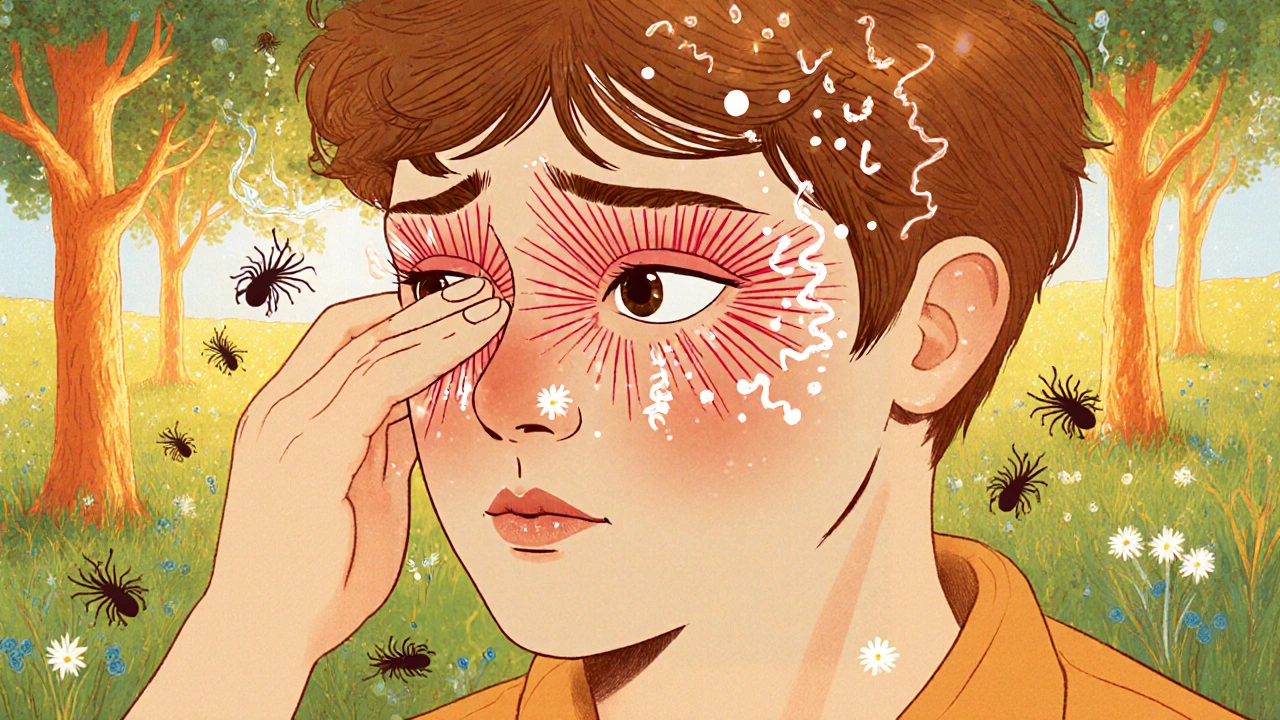Eye Allergy Causes: What Triggers Those Irritating Symptoms?
When you start to wonder why your eyes itch and water, the answer often lies in eye allergy causes, the environmental and biological triggers that provoke ocular inflammation. This condition is medically referred to as allergic conjunctivitis, an inflammation of the eye’s conjunctiva caused by an allergic reaction. Common offenders include pollen, tiny grains released by trees, grasses, and weeds during certain seasons and dust mites, microscopic creatures that thrive in household fabrics. Understanding how these triggers interact with your immune system is the first step toward relief.
The body’s response follows a clear chain: an allergen contacts the eye surface, immune cells release histamine, and blood vessels dilate, causing redness, itching, and tearing. In other words, eye allergy causes set off a histamine cascade that directly fuels the uncomfortable symptoms you feel. This mechanism links the external trigger (the allergen) to the internal reaction (histamine release), creating a predictable pattern you can spot in everyday life.
Beyond pollen and dust mites, several other categories join the list of culprits. Outdoor allergens such as mold spores and ragweed pollen flare up in spring and fall, while indoor sources like pet dander, cockroach droppings, and scented cleaning products linger year‑round. Even smoke, wind, and chlorine from swimming pools can act as irritants that aggravate the eyes. Each of these agents can independently trigger allergic conjunctivitis or amplify another existing trigger, making the overall picture a bit of a puzzle.
Who is most likely to suffer? People with a personal or family history of atopy—such as asthma, eczema, or hay fever—are prime candidates. Frequent outdoor exposure, certain occupations (like landscaping or pet grooming), and the use of contact lenses also raise the odds. Age matters too; children often develop eye allergies first, while adults may notice new sensitivities during seasonal changes.
Prevention focuses on cutting down exposure before the immune system can react. Simple steps include keeping windows closed during high pollen days, using HEPA filters, washing bedding in hot water weekly, and cleaning upholstery regularly to reduce dust mite buildup. If you wear contacts, consider switching to glasses on high‑allergy days and ensure lenses are cleaned with preservative‑free solution. Wearing wrap‑around sunglasses can also shield the eyes from wind‑borne particles.
When avoidance isn’t enough, treatment steps in. Over‑the‑counter antihistamine eye drops provide fast relief by blocking histamine receptors on the eye surface. Oral antihistamines work systemically for broader allergy symptoms. For persistent cases, mast‑cell stabilizers or prescription anti‑inflammatory drops can keep the reaction from firing in the first place. Combining these options with the avoidance strategies above usually gives the best long‑term control.
Below you’ll find a curated set of articles that dig deeper into each of these aspects, from detailed symptom checklists to the latest treatment options, giving you practical tools to manage eye allergy causes effectively.

Allergic Conjunctivitis Explained: Causes, Symptoms & Treatment Options
Learn what triggers allergic conjunctivitis, how to recognize its symptoms, and the most effective treatments-from eye drops to home remedies-for lasting relief.